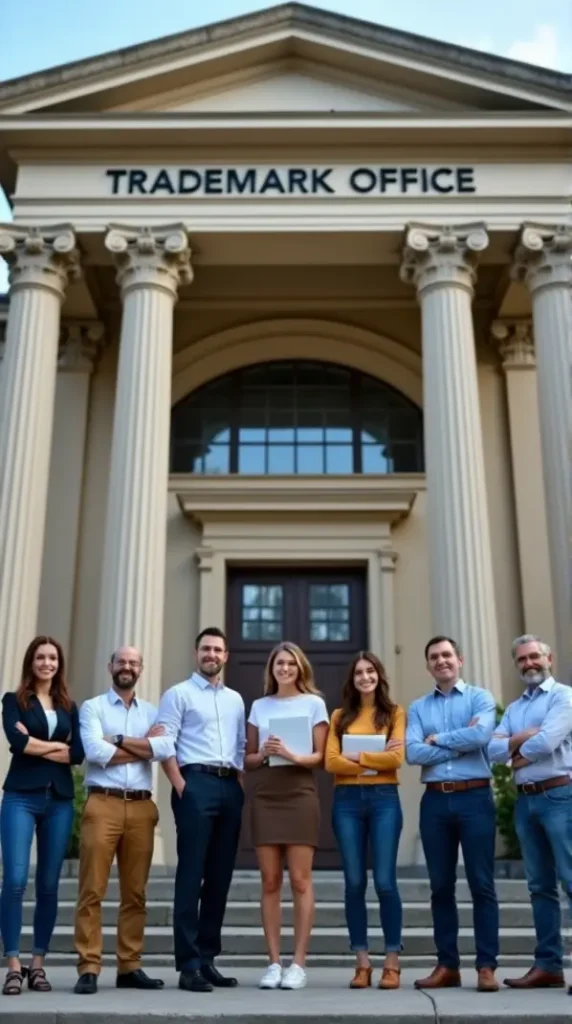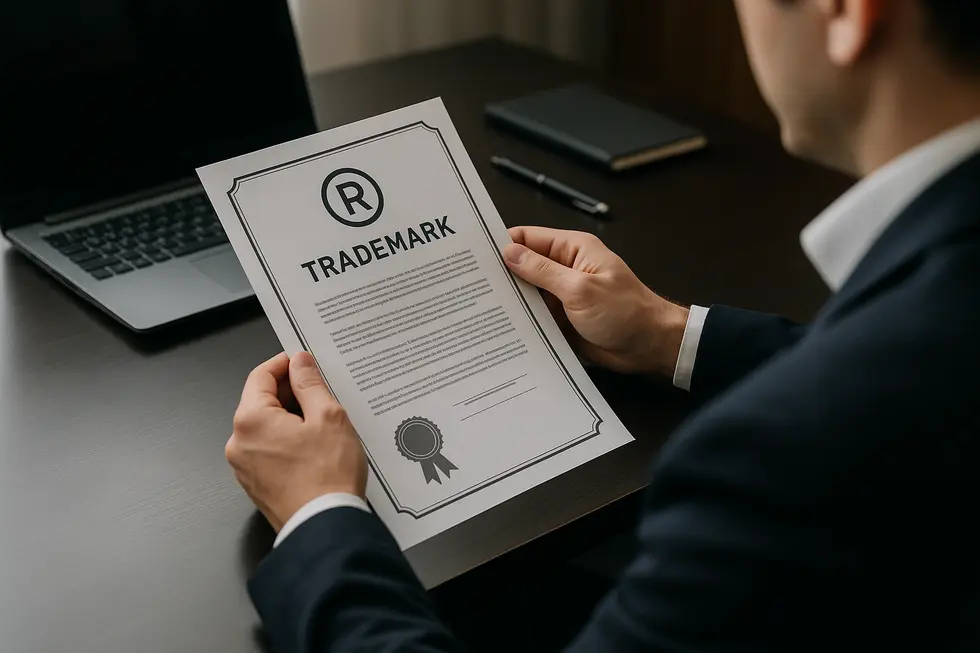Introduction
For business owners, understanding the distinction between “copyrighted” and “copywritten” is essential to effectively protect intellectual property and craft compelling marketing messages. These often-confused terms influence how creative works and advertising content are treated legally and commercially. Knowing that a work is “copyrighted” ensures you are aware of its legal protections under copyright law, while recognizing when content is “copywritten” highlights skilled marketing copy designed to engage audiences. This knowledge empowers business owners to safeguard original creations from unauthorized use and to deploy persuasive communication strategically. The chapters ahead unravel the precise definitions and differences, explore the legal framework of copyright, examine the role of copywriting in business, underscore why copyrighted status matters in enforcement, and clarify pervasive confusions surrounding these terms. By integrating these insights, business owners will be better positioned to navigate intellectual property challenges and marketing endeavors with confidence.
Tables of Contents
Chapter 1: Understanding Copyrighted and Copywritten: Definitions and Distinctions
- Legal Foundations and Intellectual Property Rights Behind Copyrighted and Copywritten
- Navigating Marketing and Creative Content: How Copyrighted and Copywritten Differ Yet Intersect
- Dispelling Confusion: The Clear Divide Between Copyrighted Protection and Copywritten Content
Chapter 2: Copyrighted Legal Protection: The Framework of Copyright Law
- Navigating Digital Complexities: Modern Challenges to Copyrighted Legal Protection
- The Economic and Societal Influence of Copyrighted Legal Protection
- Navigating the Boundaries of Copyright: Exceptions, Limitations, and Enforcement in Legal Protection
Chapter 3: Copywritten in Context: The Role of Copywriting in Marketing and Communication
- Beyond Words: How Strategic Copywriting Elevates Marketing Impact and Deepens Consumer Connections
- Psychological Strategies and Behavioral Science Shaping Effective Copywriting Communication
- From Print to Pixels: How Copywriting Drives Connection and Conversion in Modern Digital Marketing
Chapter 4: The Importance of Copyrighted Status in Intellectual Property Rights Enforcement
- Establishing Legal Authority: How Copyrighted Status Protects Creators’ Exclusive Rights and Enables Enforcement
- Navigating Digital Protections: How Copyrighted Status Empowers Intellectual Property Enforcement Online
- Economic and Societal Benefits of Copyrighted Status in Safeguarding Creativity and Innovation
Chapter 5: Clarifying Common Confusions Between Copyrighted and Copywritten Terms
- Decoding ‘Copyrighted’: Legal Rights Behind Creative Works Versus Common Misunderstandings
- Understanding ‘Copywritten’: The Marketing Craft Behind Legal Misunderstandings
- Navigating Legal Protections and Creative Roles: The Crucial Distinction Between Copyrighted and Copywritten
Chapter 1: Understanding Copyrighted and Copywritten: Definitions and Distinctions
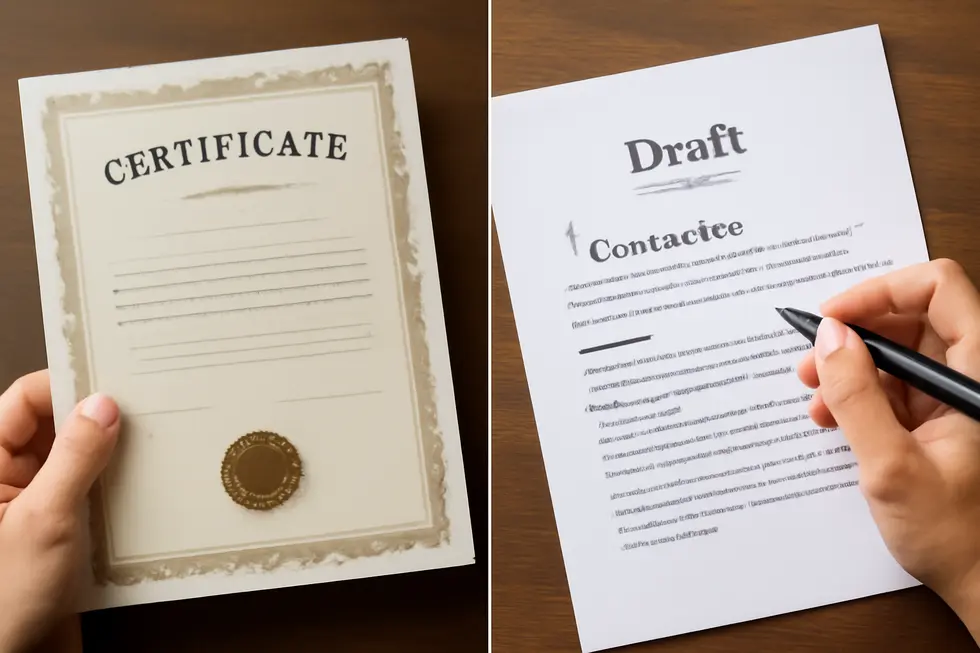
1. Legal Foundations and Intellectual Property Rights Behind Copyrighted and Copywritten
Copyright stands as a core legal mechanism protecting original creative works, granting authors exclusive rights to reproduce, distribute, and publicly share their creations. This form of intellectual property law applies to tangible expressions such as books, music, films, art, and software. Upon fixing a work in a physical or digital medium, copyright protection automatically arises, shielding the creator from unauthorized use. This protection typically endures for the life of the author plus 70 years in the United States, after which the work enters the public domain and becomes freely usable by others. While registration of a copyright with the U.S. Copyright Office is not mandatory, it significantly strengthens legal enforcement options and can facilitate claiming damages in infringement cases.
On the other hand, the term copywritten is often mistakenly used in place of “copyrighted,” but it fundamentally relates to copywriting—the professional craft of creating persuasive and promotional text aimed at marketing products, services, or ideas. Copywriting involves developing engaging content tailored to capture an audience’s attention and encourage action. Importantly, this activity does not confer any legal ownership rights over the content produced. The term “copywritten” does not signify a legal status or intellectual property protection; instead, it refers to the authorship of marketing copy.
Clarifying this distinction is essential for creatives, marketers, and legal professionals alike. While copyright confers enforceable exclusive rights governed by legislation and administered through official bodies, copywriting denotes a creative practice without legal ramifications in terms of ownership or protection. Misusing these terms can lead to confusion about the nature of rights associated with a work and its permissible use. For those involved with intellectual property matters, understanding that “copyrighted” indicates legal safeguarding of original works ensures accurate communication about rights and responsibilities.
For further authoritative insights on copyright law, the resources offered by the U.S. Copyright Office and academic materials such as those from the University of Pennsylvania provide a thorough foundation. Additionally, exploring distinctions between intellectual property rights categories can deepen understanding, as discussed in related guides on intellectual property rights categories.
2. Navigating Marketing and Creative Content: How Copyrighted and Copywritten Differ Yet Intersect
Navigating Marketing and Creative Content: How Copyrighted and Copywritten Differ Yet Intersect
Within marketing and content creation, the terms copyrighted and copywritten serve very different but often conflated roles. A copyrighted work is one that receives legal protection automatically upon its fixation in a tangible form. This protection grants exclusive rights to use, reproduce, and distribute original works such as written content, images, videos, and designs. Creators in marketing frequently rely on copyright to secure ownership of campaign assets and creative materials. Beyond automatic protection, formally registering a copyright enhances legal enforceability against unauthorized use. Marketers must be vigilant about these protections to safeguard brand assets from infringement, commonly applying measures like watermarks or digital rights management to reinforce control over digital content.
Conversely, copywritten refers to content crafted through the art and technique of copywriting, which specifically targets persuasive communication and audience engagement. Copywriting produces promotional or advertising text designed to inform, motivate, or sell products and services. Unlike copyrighted works, copywritten content’s emphasis lies in its strategic intent rather than legal status. While original copywriting benefits from copyright protection if fixed properly, the term itself does not imply legal ownership—it describes the process and outcome of creative marketing writing.
This distinction is crucial for marketers and content creators who must produce compelling copy while ensuring their outputs remain legally protected. The creation of impactful copywritten material demands originality and creativity, but recognizing when that content is also copyrighted ensures legal rights are preserved. Awareness of this interplay helps prevent misuse of protected works and supports responsible content dissemination.
For an in-depth explanation on intellectual property rights related to creative works, exploring the nuances at categories of intellectual property rights provides valuable insights. Understanding these different domains—legal protection versus marketing communication—is essential to maintaining clear boundaries and effective strategies in today’s content-driven landscape.
3. Dispelling Confusion: The Clear Divide Between Copyrighted Protection and Copywritten Content
The frequent mix-up between “copyrighted” and “copywritten” often leads to misunderstandings that blur the lines between legal rights and marketing practice. At its core, copyrighted relates strictly to legal protection granted to original works fixed in a tangible medium, such as books, music, or artwork. This protection automatically arises the moment an original work is created and provides the creator exclusive rights to reproduce, distribute, display, perform, and adapt the work. Copyright endures for an extensive period—typically the author’s life plus 70 years—safeguarding creators against unauthorized use or copying. Importantly, while registration of copyright with official agencies enhances enforcement options, the protection itself does not depend on formal registration.
Conversely, the term copywritten stems from the field of copywriting, which has no legal basis in intellectual property law. It refers to content crafted by copywriters, professionals skilled in creating compelling marketing or advertising messages aimed at influencing audiences. This content is focused on persuasion and communication, not legal ownership or exclusive rights. The misunderstanding arises because “copywritten” sounds similar to “copyrighted,” but it merely describes authorship by copywriters rather than a protected status.
Clarifying this distinction is critical for creators, marketers, and legal professionals to avoid costly mistakes in rights management and content use. Copyright carries a set of enforceable legal rights, including licensing and distribution controls, whereas copywriting concerns the strategic creation of promotional text. This important difference ensures that the terms are correctly applied, reducing confusion about what protections exist or what processes are involved in content creation.
For a more detailed explanation on copyright fundamentals and copywriting distinctions, reliable resources such as the University of Pennsylvania’s guide on copyright basics provide thorough insights. Additionally, understanding how these terms fit into the broader intellectual property framework can be further explored on topics like intellectual property rights.
Chapter 2: Copyrighted Legal Protection: The Framework of Copyright Law
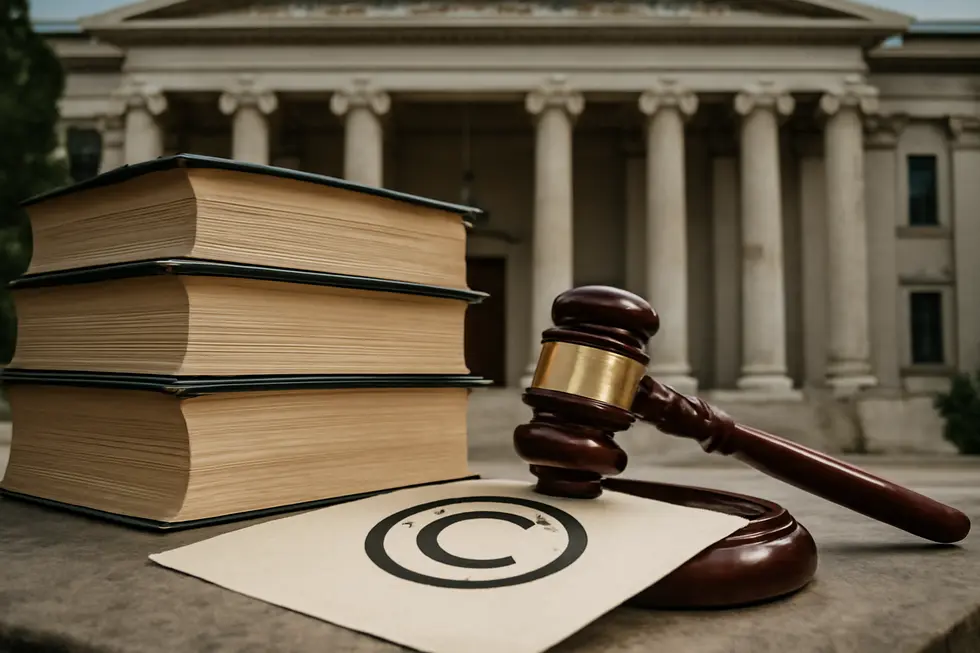
1. Navigating Digital Complexities: Modern Challenges to Copyrighted Legal Protection
Copyright law historically rests on the foundation of protecting original works created by human authors, granting them exclusive rights such as reproduction, distribution, performance, and adaptation. This framework encourages innovation while ensuring that, after a prescribed term, works enrich the public domain. However, the rapid expansion of digital technologies now challenges this traditional legal structure in profound ways. The ease of replicating and distributing digital content instantly across borders complicates enforcement, as violations can occur on an unprecedented scale and velocity, often eluding conventional legal remedies.
Artificial intelligence introduces further complexity by generating original works without direct human authorship, raising questions about ownership and the applicability of existing copyright regulations. Current laws lack clarity regarding whether AI-generated content is eligible for copyright protection and, if so, who holds those rights—be it the AI developer, user, or another party. Internationally, the borderless nature of digital content requires cooperative efforts to harmonize copyright enforcement, as unilateral national laws struggle to address cross-jurisdictional infringements effectively.
In response, legislative reforms and technological strategies such as Digital Rights Management (DRM) aim to safeguard creators’ interests while facilitating lawful digital access. These adaptations seek a delicate balance to maintain creators’ incentives without stifling cultural exchange and innovation. Furthermore, global treaties promote exceptions that serve public interests, like increased accessibility for visually impaired audiences, ensuring copyright adapts to evolving societal values.
Looking ahead, copyright law continues to evolve toward greater flexibility and inclusivity, incorporating diverse authorship concepts—including those involving AI—while reinforcing international collaboration. This ongoing transformation strives to preserve the core purpose of copyrighted legal protection amid the digital landscape’s complexities.
For a deeper legal perspective on these evolving challenges, the comprehensive guide on copyright legislation and law offers valuable insights.
2. The Economic and Societal Influence of Copyrighted Legal Protection
Copyrighted legal protection forms the backbone of a robust ecosystem that nurtures creativity and fuels economic prosperity. By granting creators exclusive rights to reproduce, distribute, and display their original works, copyright law creates a powerful incentive to innovate, driving growth in creative sectors including publishing, music, film, and software. This protection not only empowers creators to monetize their intellectual efforts but also sustains a significant number of jobs, contributing billions of dollars to the economy annually. While copyright protection is automatic once a work is fixed in a tangible form, formal registration enhances the ability to defend these rights against infringement, guarding against the substantial economic toll of piracy.
Beyond economics, copyright law is underpinned by philosophical principles that justify its existence. The labor theory asserts that creators deserve rights as a reward for their intellectual efforts, likening creative works to property. The personality theory emphasizes the author’s moral connection to their work, recognizing it as an extension of personal identity. From a utilitarian perspective, copyright incentivizes the creation and sharing of knowledge, achieving social welfare by balancing creators’ rights with public interest. Economic theory highlights copyright’s role in addressing market failures surrounding public goods, promoting both production and accessibility.
However, copyright law’s societal impact is a careful balance. While it safeguards creators’ interests, strict enforcement can limit public access to cultural resources and delay works entering the public domain, occasionally restricting creativity. The rise of digital media complicates enforcement, intensifying challenges such as piracy. Crucially, the doctrine of fair use provides vital flexibility, allowing limited, unlicensed use that fosters innovation and productivity. This balance underpins a dynamic system sustaining not only the creative economy but broader cultural advancement.
For further insights into the comprehensive economic impact of copyright, this detailed explanation provides valuable perspectives.
3. Navigating the Boundaries of Copyright: Exceptions, Limitations, and Enforcement in Legal Protection
Navigating Copyright’s Legal Landscape
Copyright law grants creators exclusive control over their original works, ensuring protection of their creative expression rather than the ideas themselves. This legal framework confers several key rights, including preventing unauthorized reproduction, distribution, or adaptation. These rights support the creator’s economic interests and moral claims, such as preserving the integrity of their work. However, copyright is not absolute; it balances exclusive control with important exceptions designed to serve the public interest.
These exceptions—such as fair use or fair dealing in many jurisdictions—allow limited use of copyrighted material without permission for purposes like criticism, education, research, or news reporting. Educational exceptions enable teachers and students to access and use copyrighted works in classrooms, promoting knowledge and learning. Additionally, parody and critical commentary are protected as transformative uses that enrich public discourse.
The enforcement of copyright employs a range of legal tools to combat infringement. Rights holders can seek court injunctions to halt unauthorized use and claim monetary damages for losses incurred. Courts may also order the disclosure of infringers’ identities and authorize the seizure or destruction of counterfeit goods. Increasingly, online intermediaries such as internet service providers bear responsibilities to remove infringing content, reflecting copyright’s adaptation to the digital age.
Enforcement practices often reflect selective strategies, where rights holders prioritize certain infringements over others based on legal, economic, and public policy considerations. This selective application underscores copyright law’s dual role in protecting creators’ rights while encouraging broad access to creative works. For example, software code is protected as a literary work, affording developers exclusive rights while fostering innovation in technology sectors.
Thus, copyright law’s comprehensive framework sustains creativity by enforcing exclusive rights, yet also embraces limitations and exceptions that promote education, freedom of expression, and technological progress. Understanding this balance is essential for creators, users, and legal practitioners alike to navigate copyright’s complex terrain effectively.
For a deeper look at these protections and exceptions, consult the detailed overview at the University of Notre Dame Library.
Chapter 3: Copywritten in Context: The Role of Copywriting in Marketing and Communication

1. Beyond Words: How Strategic Copywriting Elevates Marketing Impact and Deepens Consumer Connections
Strategic copywriting plays a pivotal role in shaping marketing success by translating product features into compelling benefits that resonate with target audiences. Instead of solely listing technical details, effective copy focuses on how a product or service improves a customer’s life or business outcomes. For instance, describing “automated reminders” becomes powerful when reframed as ensuring deadlines are never missed, which supports increased productivity and happier clients. This customer-centric approach answers the fundamental question: “What’s in it for me?”
Expert copywriters blend creativity with data-driven insights to craft messages that spark emotional engagement and align with specific marketing goals such as higher conversion rates and stronger brand loyalty. Well-crafted copy extends beyond advertising expenses; it generates one of the highest returns on investment by fueling every stage of the sales funnel—from attracting qualified leads to nurturing repeat customers. In digital marketing, especially SEO-focused campaigns, strategic copywriting optimizes user experience by guiding visitors through the conversion journey with clarity and relevance, adapting to evolving search engine algorithms to maintain visibility and impact.
Ecommerce platforms particularly benefit from persuasive copy that directly addresses customer challenges while conveying authentic brand voice. Faced with abundant online options, consumers rely on clear, relatable messages that establish trust and differentiate brands. Storytelling enhances this effect by engaging emotions and creating memorable narratives that forge personal connections, increasing attention and purchase intent far beyond mere facts or descriptions.
Such thoughtful, outcome-oriented writing ultimately shapes consumer perceptions, boosts engagement across channels, and delivers measurable marketing performance improvements. Understanding this strategic function of copywriting is essential for marketers looking to maximize communication effectiveness and business outcomes. For a detailed guide on leveraging storytelling in copywriting, see this smart marketing strategy resource.
2. Psychological Strategies and Behavioral Science Shaping Effective Copywriting Communication
Copywriting transcends mere wordcraft by integrating psychological strategies and behavioral science to create messages that resonate deeply with target audiences. This synthesis of creativity and analysis enables copywriters to tap into core human motivations—such as the fear of missing out or social belonging—and craft communications that drive engagement and conversion.
At the heart of this process lies an understanding of psychological triggers like urgency, which compels prompt action by suggesting limited availability. Social proof leverages the influence of group validation, where testimonials or user reviews encourage trust and credibility. Authority further reinforces messaging through expert endorsements, establishing reliability and encouraging acceptance. Emotional resonance, achieved through storytelling or empathy-driven language, connects on a personal level, often proving more persuasive than facts alone.
Behavioral analysis enriches these insights by examining cognitive biases that shape decision-making. Techniques such as framing information positively and appealing to loss aversion ensure the message aligns with how audiences naturally process choices. This nuanced approach is evident in UX microcopy that combines emotional appeal with clear, benefit-focused statements to improve user interaction and conversion rates.
Successful copywriting balances these psychological elements with brand identity, SEO strategies, and platform nuances, adapting tone and style to fit diverse communication channels. It combines the artistry of narrative crafting with the rigor of data-driven behavioral insights to influence perceptions and actions authentically.
This fusion of psychology and behavior science is essential for marketers and communicators striving to enhance the clarity, trust, and impact of their messaging. For a deeper dive into this art and science, see The Art and Science of Copywriting: Crafting Words That Sell.
Exploring these dynamics illuminates how copywritten content—distinct from legally copyrighted material—plays a critical role in shaping communication and persuasion within marketing frameworks, complementing the broader considerations of intellectual property protection.
3. From Print to Pixels: How Copywriting Drives Connection and Conversion in Modern Digital Marketing
Copywriting has transformed dramatically from its 19th-century origins in print advertising to become a core element of digital marketing strategies. Unlike general content writing that often aims to inform or entertain, copywriting’s essential purpose is persuasion—prompting specific actions like purchases, sign-ups, or engagement. This shift parallels the rise of digital platforms such as websites, social media, email campaigns, and video scripting, which demand a sophisticated blend of creativity, psychology, and data analysis.
Modern copywriters craft messages that build authentic brand awareness by resonating emotionally and intellectually with diverse audiences. They engage target demographics directly through conversational, platform-specific language that nurtures trust and encourages interaction. This engagement ultimately fuels conversion rates, often tracked through affiliate links, promotional codes, or direct response metrics.
Technological advances have further expanded copywriting’s role. Artificial intelligence now assists in generating highly personalized copy that adapts to user behavior and preferences at scale. This enables marketers to automate complex campaigns while maintaining the subtlety and appeal of human-crafted language. Data-driven decision-making guides iterative improvements, optimizing messages for maximum impact in competitive digital environments.
Aspiring copywriters must therefore master an array of skills, including linguistic precision, creative storytelling, SEO expertise, and a deep understanding of consumer psychology and marketing principles. Their work sits at the intersection of art and science, requiring creativity alongside strategic thinking.
This evolution highlights how copywriting, often confused with “copywritten,” is distinct from legal copyright protection but indispensable for effective communication and brand growth in today’s digital marketing landscape. For more on protecting creative work and the rights around it, explore detailed insights at copyright protection begins when created.
Chapter 4: The Importance of Copyrighted Status in Intellectual Property Rights Enforcement

1. Establishing Legal Authority: How Copyrighted Status Protects Creators’ Exclusive Rights and Enables Enforcement
Copyrighted status forms the essential legal foundation for securing creators’ exclusive rights to their original works. Upon fixation of a creative work in a tangible medium—such as writing, recording, or digital format—protection under copyright law attaches automatically, granting the author exclusive control over reproduction, distribution, public performance, display, and creation of derivative works. While this protection is immediate, formal registration with the U.S. Copyright Office provides additional benefits, including public documentation of ownership and eligibility to seek statutory damages and attorney fees in infringement litigation. This dual system of automatic and registration-based protection reinforces the creator’s authority over their intellectual property.
These exclusive rights are crucial economically and legally, as they empower creators to monetize their work through licensing, sales, or partnerships, thus underpinning creative industries. Beyond economic incentives, some jurisdictions recognize moral rights, safeguarding authors’ reputations by ensuring proper attribution and preventing distortion of their works. The bedrock of these protections lies in constitutional provisions like the U.S. Intellectual Property Clause, which authorizes exclusive rights to foster progress in knowledge and culture.
Formal enforcement mechanisms depend heavily on the recognized copyrighted status. Legal avenues such as civil lawsuits can halt unauthorized use, secure financial compensation, or impose injunctions. In severe cases, criminal penalties may deter deliberate infringement, collectively preserving the exclusivity and commercial value of creative works. This framework balances promoting innovation with maintaining market integrity by controlling how creative content is exploited.
Understanding the legal bedrock of copyright clarifies why copyrighted status is more than a label—it is the binding legal mechanism that transforms original content into protected intellectual property. For creators and businesses, proper recognition and, where advantageous, registration of copyrights are vital steps toward protecting creative output and maximizing its value within the competitive marketplace.
For a deeper understanding of the legal perspective on enforcing copyrights, see the detailed Georgetown Law Journal analysis on selective enforcement of copyright rights.
Additionally, for practical business implications and protecting your intellectual property, exploring intellectual property rights categories can provide helpful guidance.
2. Navigating Digital Protections: How Copyrighted Status Empowers Intellectual Property Enforcement Online
Copyrighted status plays an indispensable role in securing intellectual property rights amid the complexities of the digital era. It legally affirms a creator’s exclusive control over their original work, enabling enforcement against unauthorized reproduction, distribution, and display across digital platforms. Unlike the traditional physical environment, the internet facilitates instantaneous copying and sharing, which poses increased risks of infringement. Thus, establishing and maintaining a clear copyrighted status is foundational to asserting ownership and seeking remedies when rights are violated in such a borderless space.
Advances in technology have shaped new tools and frameworks that aid creators and rights holders in protecting their content. Digital Rights Management (DRM) systems restrict unauthorized access and sharing by embedding usage rules directly into digital files. Meanwhile, emerging blockchain technologies provide immutable, transparent records of ownership and licensing, enhancing verification and reducing piracy. These innovations depend on the underlying legal status that confirms copyright ownership as proof of entitlement.
Artificial intelligence also influences enforcement dynamics. Machine learning algorithms are leveraged to scan vast digital libraries for infringement, automating detection and enabling rapid takedown of illicit copies. However, new challenges arise since AI-generated works currently lack copyright protection without human authorship, creating a nuanced landscape for rights management.
Furthermore, the established legal framework remains crucial, as it defines ownership duration—generally extending to the author’s life plus 70 years in the U.S.—and underpins international enforcement efforts. Recognizing the copyrighted status is necessary for navigating evolving digital distribution models like streaming and cloud-based sharing, which demand adaptable licensing structures.
For creators and businesses seeking clarity on intellectual property rights and their intersection with copyright protections, exploring detailed resources such as the agreement copyright business guide is valuable. Additionally, official guidance from the U.S. Copyright Office provides authoritative information on leveraging technological tools within the legal framework to safeguard creative works effectively.[4]
3. Economic and Societal Benefits of Copyrighted Status in Safeguarding Creativity and Innovation
The copyrighted status of intellectual property serves as a cornerstone for enforcing rights that protect the interests of creators and the industries reliant upon their works. This status grants creators exclusive legal rights, enabling them to deter unauthorized use by threatening infringement penalties and taking decisive legal action when necessary. Such deterrence is vital in reducing costly piracy and unauthorized distribution that undermine economic returns.
Beyond preventing infringement, copyrighted status empowers rights holders to recover legal costs and damages through the courts. This capacity to recoup expenses acts as a financial support mechanism during enforcement, encouraging creators and companies to defend their works proactively. Registration or formal documentation of copyrights further streamlines these processes by substantiating claims and reinforcing legal standing.
From an economic perspective, the absence of robust copyright protections has dire consequences. Global losses from piracy and infringement reach tens of billions annually, threatening the livelihood of millions employed in music, film, publishing, software, and other creative sectors. Copyright safeguards ensure a sustainable revenue model for these industries, which stimulates innovation, job creation, and continued cultural production.
Societally, copyrighted status cultivates an environment where creators can monetize their efforts fairly, supporting ongoing innovation and cultural diversity. While broad access to works might be tempting, weak enforcement can erode the incentives that fuel development in domestic creative markets. Legal enforcement also accommodates strategic, selective actions to balance costs with expected economic returns, optimizing the protection of creative investments.
Understanding this dynamic highlights why copyrighted status is more than a legal formality—it is an economic and societal protector. It anchors the intellectual property framework that drives innovation while balancing fair access to creative works through exceptions like fair use. For deeper insights into intellectual property categories and protections, see categories of intellectual property rights.
For further reference on the critical role of copyright in economic incentives and enforcement, consult resources on copyright law and economic impact.
Chapter 5: Clarifying Common Confusions Between Copyrighted and Copywritten Terms
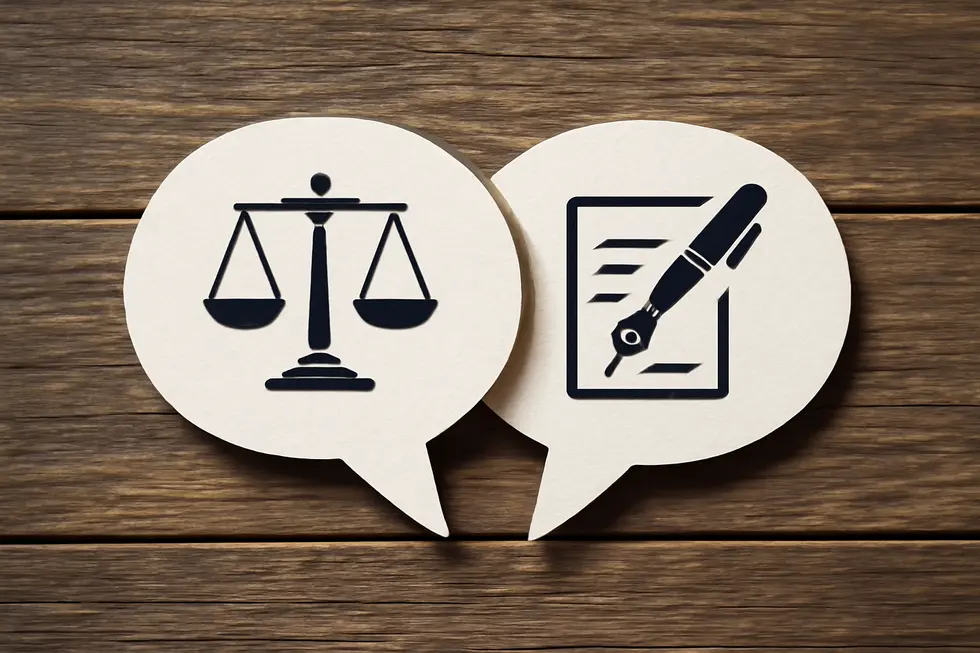
1. Decoding ‘Copyrighted’: Legal Rights Behind Creative Works Versus Common Misunderstandings
Copyrighted describes a work legally protected by copyright law, granting its creator exclusive rights to reproduce, distribute, and publicly display the original creation. This protection automatically applies when an original work is fixed in a tangible form—such as a book, song recording, painting, or software code—without requiring formal registration. However, registering with the U.S. Copyright Office strengthens legal protections and facilitates enforcement against infringement. The protection typically lasts for the life of the author plus 70 years, after which the work enters the public domain and becomes free for public use.
Importantly, the term copyrighted is often confused with copywritten, which has no legal meaning in this context. While copyrighted centers on legal ownership and intellectual property rights, copywritten relates to the professional craft of copywriting—composing persuasive marketing or advertising text. Therefore, using copywritten to indicate legal protection is incorrect, as it pertains solely to content creation, not intellectual property law.
Beyond these distinctions, other related terms like copyediting—a process focused on improving text clarity and style—should not be conflated with either copyright protection or original copy creation. Also, copyright ownership can be transferred or assigned; the author who creates the work is not always the sole rights holder.
Recognizing the difference between copyrighted and copywritten avoids misunderstandings for creators, marketers, and legal professionals. It clarifies that a copyrighted work enjoys legal safeguards enabling its owner to control usage and reproduction, whereas copywritten content represents crafted text intended to engage or sell, without reflecting any legal status. For a deeper exploration of these concepts and their frequent confusions, see the detailed discussion at Brafton.
2. Understanding ‘Copywritten’: The Marketing Craft Behind Legal Misunderstandings
Copywritten is frequently mistaken as a synonym for copyrighted, yet its meaning lies in an entirely different realm. While copyrighted describes a legal status protecting original works from unauthorized use, copywritten refers to content created through the art and skill of copywriting—a profession focused on producing persuasive advertising or marketing text. This distinction is crucial to grasp because it helps clarify misconceptions that often arise within creative and legal discussions.
A copywriter crafts the written content, or “copy,” intended to inform, engage, or motivate audiences. This content can include slogans, product descriptions, promotional emails, and more. The word copywritten essentially means “written by a copywriter,” signifying the origin of the text rather than its legal protections. Despite common misuse, the term carries no legal weight and does not indicate any intellectual property status.
Conversely, copyrighted specifically denotes that a work, whether text, music, or images, is shielded under copyright law. This protection grants creators exclusive rights to reproduce, distribute, and adapt their creations. Many types of copy can indeed be copyrighted if they fulfill originality standards, but it remains important to separate the creator’s role from the legal designation.
Understanding these different functions helps prevent confusion among marketers, creators, and legal professionals. Recognizing that copywritten describes the creative process while copyrighted refers to protected legal rights ensures clearer communication about content ownership and usage. For anyone producing or using original text, distinguishing these terms reduces ambiguity about what protections apply and guides proper attribution.
For additional insights into intellectual property categories and protections for original works, see this detailed guide on categories of intellectual property rights. For further explanation about the differences between copywriting and copyright concepts, consult the explanation by Brafton.
3. Navigating Legal Protections and Creative Roles: The Crucial Distinction Between Copyrighted and Copywritten
Understanding the Legal and Creative Divide Between Copyrighted and Copywritten is essential for anyone working with creative content. Copyrighted works are those legally safeguarded by intellectual property law. This means the original creator holds exclusive rights to reproduce, distribute, perform, or alter the work, usually for the life of the author plus 70 years. These protections aim to prevent unauthorized use and safeguard artistic and literary contributions. Misidentifying a copyrighted work as simply “copywritten” can lead to costly legal missteps, such as unintended infringement. Copyright infringement risks include lawsuits, cease-and-desist orders, and financial penalties. Defenses like fair use exist but are narrow and complex, requiring careful interpretation and application. On the other hand, copywritten refers to text crafted through copywriting, a professional skill aimed at creating persuasive marketing or advertising content. This term does not indicate legal protection; rather, it describes a creative process that shapes the message and intent behind promotional materials. The confusion between these terms can dilute the understanding of who owns creative rights and what permissions are necessary for use or reproduction. Recognizing this distinction supports proper respect for intellectual property and clarifies roles in the creative industries—separating legal ownership from marketing authorship. Furthermore, a clearer grasp of these terms facilitates informed decisions about licenses, such as Creative Commons or copyleft, which balance protections with sharing possibilities. Notably, complex intersections with trademarks and public domain further underscore the significance of precise terminology when managing creative assets. For creators, marketers, and legal professionals, this clarity fosters smoother collaboration, legal compliance, and strategic content management. For more insights on intellectual property rights that relate to creative and business naming protections, see categories of intellectual property rights. External resource: What Does a Copywriter Do?
Final thoughts
Distinguishing between “copyrighted” and “copywritten” is more than a linguistic nuance—it’s a crucial element for business owners who seek to protect their intellectual property while communicating effectively with their audiences. Understanding that a “copyrighted” work enjoys legal protection under established copyright laws allows business owners to prevent unauthorized use and secure their creative assets. Simultaneously, recognizing “copywritten” content as the result of strategic, persuasive writing highlights its role in shaping consumer perceptions and driving sales. Both aspects are integral to a successful business strategy, intertwining legal safeguards with compelling communication. By mastering these concepts, business owners can confidently protect their creative outputs and leverage expertly crafted marketing copy to enhance their brand presence and growth.
Get your trademark today! Thousands have protected their brand by filing a trademark. What are you waiting for? Start your trademark application!
About us
The globe’s top website for registering trademarks and safeguarding your brand, name, logo, or slogan. We make protecting your business identity seamless with expert guidance, fast processing, and trusted legal assurance.


